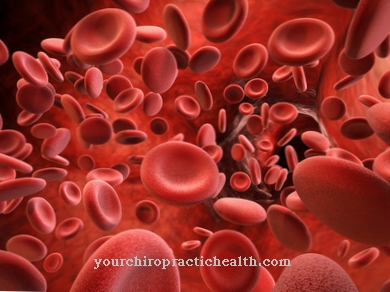The Grooving the zygote is a cell division in early embryogenesis. It follows fertilization and is part of preembyonic development. Faults in cleavage division are associated with gene mutations such as trisomies or parental disomies.
What is the furrow?

At the beginning of embryogenesis, cells divide by pinching off the fertilized egg cell. This process is also called furrowing or Groove division the zygote denotes and occurs in all multicellular living things.
The embryo does not enlarge during this cell division, but is segmented. The furrow division is extremely fast, as it does not require any new production of biological components. A core division can theoretically take place every seven to eight minutes in this way.
In contrast to conventional cell division, the divisions run synchronously and the nucleus-plasma relationship changes permanently with a shortened cell cycle consisting of an S and M phase. The end product of the furrow divisions is the so-called morula. It is a cell-filled sphere that contains the blastormers. These blastomeres are the cells that result from division.
A total of three different types of furrowing are distinguished: the meroblastic furrowing of fish, reptiles, insects and birds, the holoblastic furrowing of mammals and amphibians and the spiral furrowing of annelids and molluscs.
Function & task
Fissure divisions belong to the pre-embryonic phase of embryonic development and are connected to the fertilization of the egg cell. The cleavage is preceded by the fusion of the nucleus in the egg cell. A few hours later, the first cell division begins, which gives rise to the morula from a two-cell stage to a four-cell and eight-cell stage.
The morula is a rounded cluster of cells that appears on the third or fourth day after fertilization. The cell divisions take place in the form of mitosis. The subsequent cells are genetically identical to the zygote and are therefore also referred to as clones.
The morula becomes a germinal vesicle or blastula in the fallopian tube within the next five to six days and in this form it nests in the mucous membrane of the uterus. The furrowing of the zygote is therefore an important preparatory step for embryonic development and has a correspondingly high value for reproduction.
At the beginning of each cleavage division, the cells, but not the plasma, become more. So the cells grow later and currently only divide into blastomeres of decreasing size.
In the plasma of the zygote there is yolk, with different distribution. Usually a side that is relatively poor in yolk is opposed to a comparatively yolk-rich side. The transition between these two sides is called the gray crescent moon. The yolk distribution determines how the mitotic division of the zygote takes place in detail. Yolk-rich places are called the vegetative pole and are subject to slow furrowing. At the so-called animal pole of the yolk-poor side, the furrow takes place at a higher speed. The different types of grooves are therefore related to the distribution of the yolk.
The totally equal grooving takes place, for example, with isolecithal yolk. The yolk is relatively evenly distributed in these zygotes. The totally equal grooving creates evenly distributed blastomeres of roughly the same size and occurs mainly in holoblastic animals.
The opposite is totally inequitable or discoidal grooving. It assumes a telolecithal yolk distribution, in which the yolk is mainly on the vegetative pole of the zygote. Eggs with a particularly large amount of yolk at the vegetative pole go through the discoidal furrow. The meroblasts, for example, are creatures with this type of furrow.
The third type of furrow division is the superficial furrow. It takes place on centrolecithal eggs, the yolk of which lies inside. The new cells form on the surface of the egg and the yolk remains inside.
Illnesses & ailments
Chromosomal losses or duplications can already occur at the first cleavage division. As a rule, disorders of the division of the egg or sperm cell before fertilization are responsible for such symptoms. During mitotic division, for example, embryos with a trisome or disome cell line are created where it is not required.
A uniparental disomy can possibly develop into an isodisomy in which a parental chromosome is completely or partially duplicated. The genetic researcher knows such chromosome abnormalities as mosaics. Patau syndrome, for example, is a related disease associated with a trisomy of chromosome 13. The syndrome is associated with high mortality and has been linked to stillbirths. Malformations of the limbs are just as much a part of the clinical picture as heart defects or developmental disorders of the brain and malformations of the central nervous system.
Edwards syndrome is known as trisomy 18. Heart defects, developmental disorders in the brain and malformations in the central nervous system are also present in this disease. Malformations of the extremities and abdominal area are also common symptoms.
Today, diseases such as Prader-Willi syndrome or Angelmann syndrome are also associated with a uniparental disomy. In the Prader-Willi syndrome, there is usually a predisposition to obesity and a short stature and a mental disability. Angelmann syndrome is characterized by epilepsies, misshapeness and ataxias as well as cramps, perception disorders and a strong psychomotor retardation.
How severe trisomies or disomies are in individual cases and how much they affect the lives of those affected varies considerably from person to person.
























.jpg)



